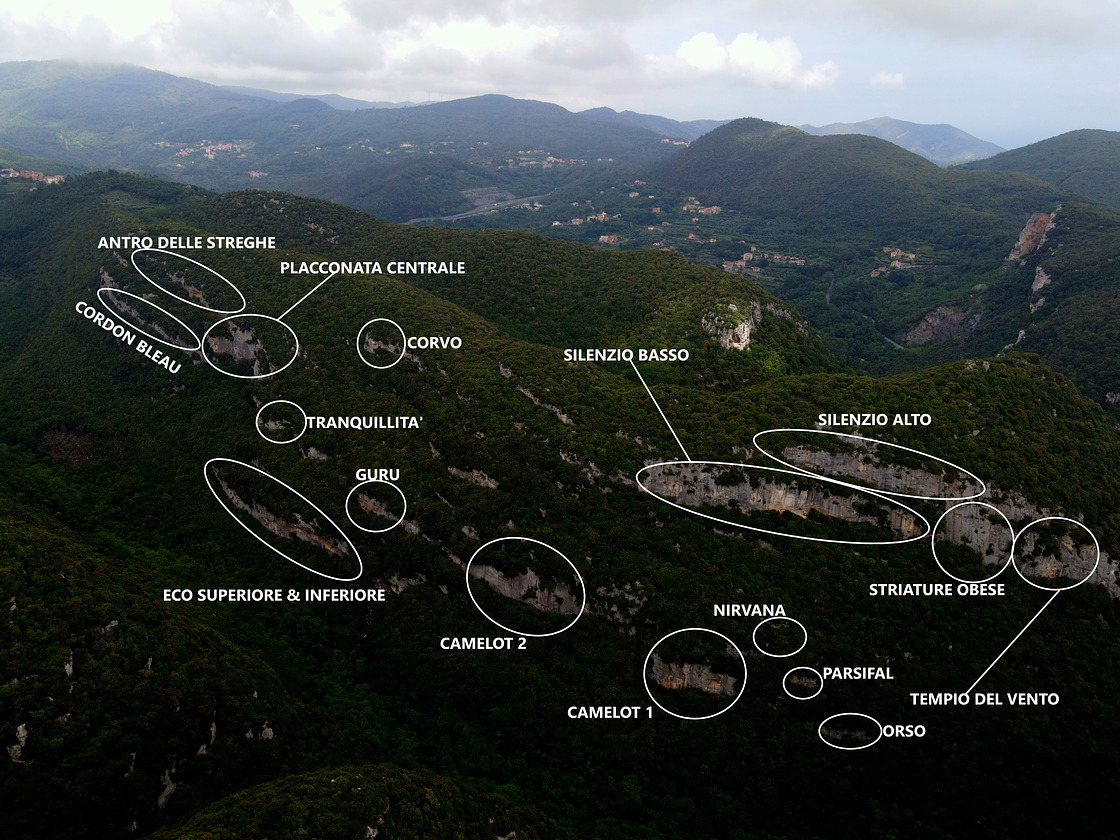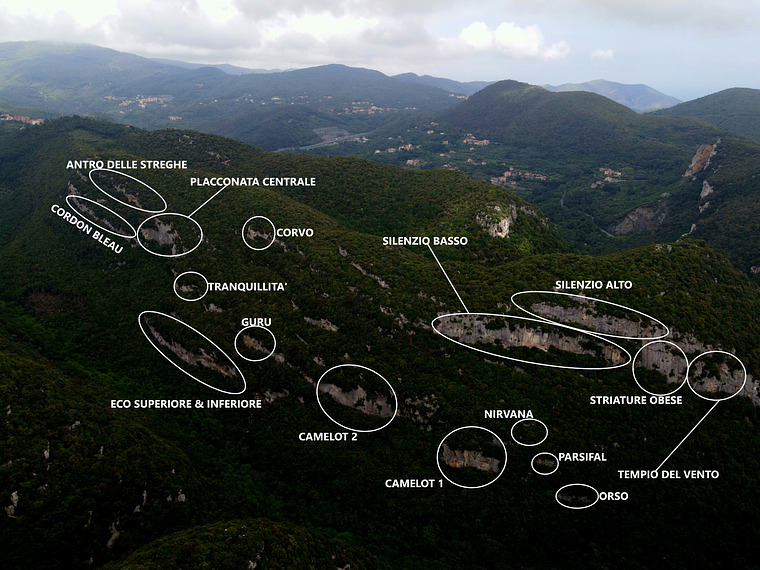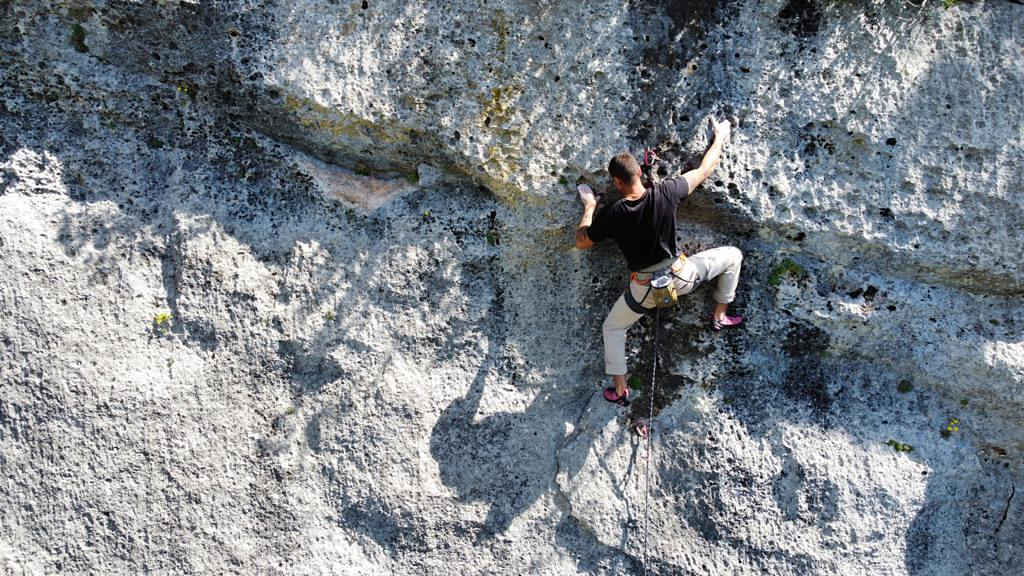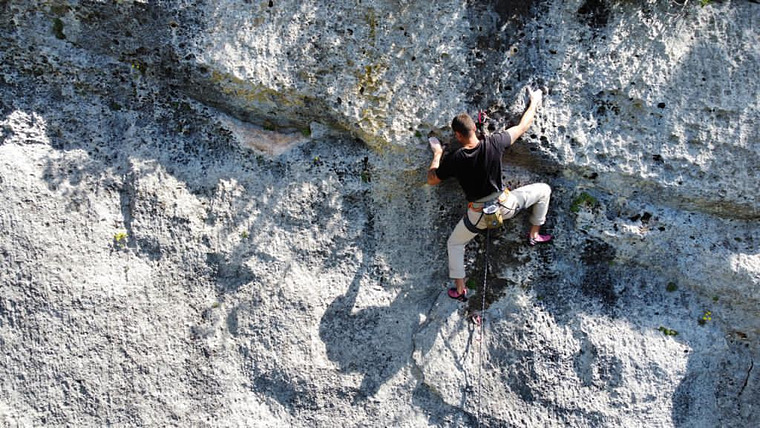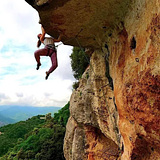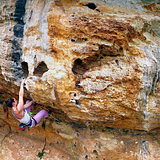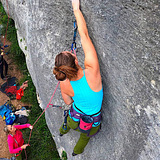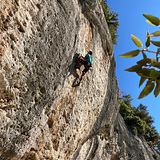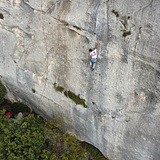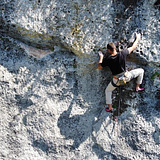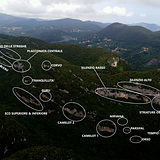⚠️ NO INTERNET CONNECTION, DOWNLOAD THE TOPO BEFORE⚠️
☀️SUN DURING THE DAY:
•This side of the valley is always sunny after 12 am
🧭 EXPOSURE:
•S.W: Antro delle Streghe, Corvo, Silenzio Alto, Silenzio Basso, Striature Obese, Tempio del Vento
•W: Placconata Centrale, Avancorpo della Placconata, Cordon Bleau, Falesia del Guru, Falesia della Tranquillità, Eco Superiore, Eco Inferiore, Camelot1, Camelot 2, Orso, Nirvana, Parsifal
•E: Cinghiale
🧱ROCK TYPE: The rock here is Limestone.
📆 BEST PERIOD:
The Best period is for sure middle season and winter for this side of the valley.
👪 FAMILY FRIENDLY:
YES: Placconata Centrale, Avancorpo della Placconata, Silenzio Alto, Antro delle Streghe, Cordon Bleau, Tempio del Vento, Falesia della Tranquillità, Falesia del Guru, Camelot1, Camelot 2, Cinghiale
NO: All the others
📱PHONE SIGNAL: NO almost everywhere
🇬🇧
⛰️
Val Cornei, located in the heart of the Finale Ligure climbing area, is a true paradise for climbing enthusiasts. This corner of Liguria, immersed in lush and wild nature, offers a variety of cliffs that cater to all skill levels and climbing styles. Here is a detailed overview of the features that make Val Cornei an unmissable destination for climbers.
Val Cornei is nestled in a verdant landscape characterized by Mediterranean vegetation that envelops the cliffs, creating a unique atmosphere. The white and gray limestone walls emerge among the trees, offering a spectacular visual contrast. The tranquility of the area, far from the hustle and bustle of more touristy spots, allows climbers to fully immerse themselves in nature and focus on vertical challenges.
The cliffs of Val Cornei present a variety of climbing styles, from technical slabs to overhanging power routes, offering opportunities for both beginners and experts.
The routes in Val Cornei cover a wide range of difficulty levels, from 4a to 8s, offering something for every level of climber. Most of the routes are well bolted, thanks to the tireless work of local and international bolters who have dedicated time and energy to ensure the safety and accessibility of the cliffs.
Val Cornei is climbable year-round, but the best conditions are found in spring and autumn, when the temperatures are mild and the rock offers the best grip. During the summer, the shade provided by the vegetation still makes climbing possible, especially in the morning and late afternoon hours.
One of the most fascinating aspects of Val Cornei is the climbing community that has formed around these cliffs. Climbers of all nationalities meet here, sharing stories, tips, and an incredible passion for climbing. The atmosphere is welcoming and inclusive, making every visit an enriching experience both from a sporting and a human perspective.
In summary, Val Cornei in Finale Ligure represents one of the hidden gems of sport climbing, offering a perfect combination of natural beauty, technical challenges, and a vibrant community. Every climber who visits this valley leaves a piece of their heart on its rocks and takes away indelible memories of a unique experience.
• Placconata Centrale: Known for its technical slabs, this cliff offers climbing routes that require precision and control. The routes here are generally well bolted and vary in difficulty, making it an excellent choice for those looking to improve their technique.
• Silenzio Basso: This cliff is famous for its challenging and spectacular routes. Here you will find some of the most difficult lines in Val Cornei, such as "Pas De Bloc" bolted by Christian Core. Overhanging routes and dynamic movements are the norm, requiring strength and endurance.
• Silenzio Alto: Located above Silenzio Basso, this cliff offers equally challenging routes with a mix of overhangs and technical slabs. It is a less frequented but equally fascinating area, ideal for those seeking new and lesser-known challenges.
• Antro delle Streghe: A suggestive and charming spot, this cliff offers varied climbing with routes ranging from technical to athletic. The presence of routes of different difficulties makes it suitable for a wide range of climbers.
• Cordon Bleu: Known for its high-difficulty routes, Cordon Bleu is a cliff that attracts the most experienced climbers seeking extreme challenges. The routes are characterized by powerful and technical movements, requiring a mix of strength and skill.
• Striature Obese: One of the most iconic cliffs, known for the famous route "Braille" freed by Luca Lenti. The natural striations of the rock offer a unique challenge, with routes that require a combination of strength, technique, and rock-reading skills.
• Falesia del Corvo: A small cliff with a handful of medium-easy pitches, it deserves a brief visit.
• Tempio del Vento: Sheltered from the wind, this place boasts many routes of easy and medium difficulty. It is a noteworthy area, with overhangs and slabs that will make everyone happy.
• Cinghiale: A cave for big muscles on the left and vertical nice line on the rigth.
• Falesia della Tranquillità: Divided in three small sectros with some lines, this tiny crag is as the name suggest, very quite and suggestive.
• Falesia del Guru: One of the most beautiful crag in Finale, overhang and good holds assuring fun and challanges.
• Camelot 1: A beautiful crag with easy routes on overhangs and vertical walls, as well as very technical routes on Finale-style slabs.
• Camelot 2: A large crag with an overhanging section featuring medium difficulty routes with good holds, and more vertical and technical routes on the sides.
• Eco Inferiore: A long crag with a variety of fun and high-quality 20-meter routes.
• Eco Superiore: A small crag with a handful of routes that never exceed 12 meters.
• Orso: Small crag of little interest, with short routes partially overgrown by vegetation.
• Parsifal: Small crag of little interest, with short routes partially overgrown by vegetation.
• Nirvana: Small crag of little interest, with short routes partially overgrown by vegetation.
🇮🇹
⛰️
La Val Cornei, situata nel cuore del comprensorio di Finale Ligure, è un vero e proprio paradiso per gli appassionati di arrampicata. Questo angolo di Liguria, immerso in una natura rigogliosa e selvaggia, offre una varietà di falesie che soddisfano tutti i livelli di abilità e stili di arrampicata. Ecco una panoramica dettagliata delle caratteristiche che rendono la Val Cornei una destinazione imperdibile per i climber.
La Val Cornei è incastonata in un paesaggio verdeggiante, caratterizzato da una vegetazione mediterranea che avvolge le falesie e crea un'atmosfera unica. Le pareti di calcare bianco e grigio emergono tra gli alberi, offrendo un contrasto visivo spettacolare. La tranquillità del luogo, lontano dal trambusto delle zone più turistiche, permette ai climber di immergersi completamente nella natura e concentrarsi sulle sfide verticali.
Le falesie della Val Cornei presentano una varietà di stili di arrampicata, dalle placche tecniche alle strapiombanti vie di forza, offrendo opportunità sia per i principianti che per gli esperti.
Le vie nella Val Cornei coprono un ampio spettro di gradi di difficoltà, dai 4a agli ottavi, offrendo qualcosa per ogni livello di arrampicatore. La maggior parte delle vie sono ben chiodate, grazie all'instancabile lavoro di chiodatori locali e internazionali che hanno dedicato tempo ed energia per garantire la sicurezza e l'accessibilità delle falesie.
La Val Cornei è arrampicabile tutto l'anno, ma le condizioni migliori si trovano in primavera e autunno, quando le temperature sono miti e la roccia offre la migliore aderenza. Durante l'estate, l'ombra fornita dalla vegetazione rende comunque possibile l'arrampicata, soprattutto nelle ore del mattino e del tardo pomeriggio.
Uno degli aspetti più affascinanti della Val Cornei è la comunità di arrampicatori che si è formata attorno a queste falesie. Qui, scalatori di tutte le nazionalità si incontrano, condividendo storie, consigli e un'incredibile passione per l'arrampicata. L'atmosfera è accogliente e inclusiva, rendendo ogni visita un'esperienza arricchente sia dal punto di vista sportivo che umano.
In sintesi, la Val Cornei a Finale Ligure rappresenta una delle gemme nascoste dell'arrampicata sportiva, offrendo una combinazione perfetta di bellezza naturale, sfide tecniche e una comunità vibrante. Ogni arrampicatore che visita questa valle lascia un pezzo del proprio cuore sulle sue rocce e porta con sé ricordi indelebili di un'esperienza unica.
• Placconata Centrale: Conosciuta per le sue placche tecniche, questa falesia offre vie di arrampicata che richiedono precisione e controllo. Le vie qui sono generalmente ben chiodate e variano in difficoltà, rendendola un'ottima scelta per chi cerca di migliorare la propria tecnica.
• Silenzio Basso: Questa falesia è famosa per le sue vie impegnative e spettacolari. Qui si trovano alcune delle linee più difficili della Val Cornei, come "Pas De Bloc" chiodata da Christian Core. Le vie strapiombanti e i movimenti dinamici sono la norma, richiedendo forza e resistenza.
• Silenzio Alto: Situata sopra il Silenzio Basso, questa falesia offre vie altrettanto impegnative con un mix di strapiombi e placche tecniche. È un'area meno frequentata ma altrettanto affascinante, ideale per chi cerca sfide nuove e meno conosciute.
• Antro delle Streghe: Un luogo suggestivo e ricco di fascino, questa falesia offre un arrampicata varia con vie che spaziano dal tecnico all'atletico. La presenza di vie di diversa difficoltà la rende adatta a una vasta gamma di arrampicatori.
• Cordon Bleu: Conosciuta per le sue vie di alta difficoltà, Cordon Bleu è una falesia che attira i climber più esperti in cerca di sfide estreme. Le vie sono caratterizzate da movimenti potenti e tecnici, richiedendo un mix di forza e abilità.
• Striature Obese: Una delle falesie più iconiche, conosciuta per la celebre via "Braille" liberata da Luca Lenti. Le striature naturali della roccia offrono una sfida unica, con vie che richiedono una combinazione di forza, tecnica e lettura della roccia.
• Falesia del Corvo: Una piccola falesia con una manciata di tiri medio facili, merita una piccola visita.
• Tempio del Vento: Roparatissimo dal vento questo posto vanta moltissimi tiri di facile e media difficoltà, una zona degna di nota, strapiombi e placche fanno si che tutti sranno contenti.
• Cinghiale: Una grotta per chi ha grandi muscoli a sinistra e linee verticali bellissime a destra.
• Falesia della Tranquillità: Divisa in tre piccoli settori con alcune vie, questa piccola falesia è, come suggerisce il nome, molto tranquilla e suggestiva.
• Falesia del Guru: Una delle falesie più belle di Finale, con strapiombi e buone prese che assicurano divertimento e sfide.
• Camelot 1: Una bellissima falesia con vie facili su strapiombi e muri verticali, e via molto tecniche su placche Finalesi
• Camelot 2: Una grossa falesia con una sezione di strapiombo con vie di media difficoltà su buini buchi, sui lati vie più verticali e tecniche
• Eco Inferiore: Una lunga falesia con una varietà di vie sui 20 metri, divertenti e di ottima qualità
• Eco Superiore: Una piccola falesia con una manciata di tiri che non superano mai i 12 metri.
• Orso: Piccola falesia di scarso interesse, con vie corte e in parte invase dalla vegetazione.
• Parsifal: Piccola falesia di scarso interesse, con vie corte e in parte invase dalla vegetazione.
• Nirvana: Piccola falesia di scarso interesse, con vie corte e in parte invase dalla vegetazione.
🇩🇪
⛰️
Die Val Cornei, die sich im Herzen des Klettergebiets Finale Ligure befindet, ist ein wahres Paradies für Kletterbegeisterte. Diese Ecke Liguriens, eingebettet in üppige und wilde Natur, bietet eine Vielzahl von Klippen, die alle Fähigkeitsstufen und Kletterstile ansprechen. Hier ist eine detaillierte Übersicht über die Merkmale, die Val Cornei zu einem unverzichtbaren Ziel für Kletterer machen.
Val Cornei liegt in einer grünen Landschaft, die von mediterraner Vegetation geprägt ist und die Klippen umgibt, und schafft so eine einzigartige Atmosphäre. Die weißen und grauen Kalksteinwände tauchen zwischen den Bäumen auf und bieten einen spektakulären visuellen Kontrast. Die Ruhe der Gegend, fernab vom Trubel touristischer Hotspots, ermöglicht es Kletterern, sich vollständig in die Natur zu vertiefen und sich auf vertikale Herausforderungen zu konzentrieren.
Die Klippen von Val Cornei bieten eine Vielzahl von Kletterstilen, von technischen Platten bis hin zu überhängenden Kraftstrecken und bieten Möglichkeiten für Anfänger und Experten gleichermaßen.
Die Routen in Val Cornei decken ein breites Spektrum an Schwierigkeitsgraden von 4a bis 8s ab und bieten für jede Könnerstufe etwas Passendes. Die meisten Routen sind gut abgesichert, dank der unermüdlichen Arbeit von lokalen und internationalen Wegbereitern, die Zeit und Energie investiert haben, um die Sicherheit und Zugänglichkeit der Klippen zu gewährleisten.
Val Cornei ist das ganze Jahr über kletterbar, aber die besten Bedingungen finden sich im Frühling und Herbst, wenn die Temperaturen mild sind und der Fels den besten Griff bietet. Während des Sommers ermöglicht der Schatten der Vegetation immer noch das Klettern, insbesondere am Morgen und am späten Nachmittag.
Einer der faszinierendsten Aspekte von Val Cornei ist die Klettergemeinschaft, die sich um diese Klippen gebildet hat. Kletterer aller Nationalitäten treffen sich hier, teilen Geschichten, Tipps und eine unglaubliche Leidenschaft fürs Klettern. Die Atmosphäre ist einladend und inklusiv und macht jeden Besuch zu einer bereichernden Erfahrung sowohl aus sportlicher als auch aus menschlicher Sicht.
Zusammenfassend repräsentiert Val Cornei in Finale Ligure eine der versteckten Perlen des Sportkletterns und bietet eine perfekte Kombination aus natürlicher Schönheit, technischen Herausforderungen und einer lebendigen Gemeinschaft. Jeder Kletterer, der dieses Tal besucht, hinterlässt ein Stück seines Herzens auf den Felsen und nimmt unvergessliche Erinnerungen an eine einzigartige Erfahrung mit sich.
• Placconata Centrale: Bekannt für ihre technischen Platten, bietet diese Klippe Kletterrouten, die Präzision und Kontrolle erfordern. Die Routen sind in der Regel gut abgesichert und variieren in Schwierigkeit, was sie zu einer ausgezeichneten Wahl für diejenigen macht, die ihre Technik verbessern möchten.
• Silenzio Basso: Diese Klippe ist berühmt für ihre anspruchsvollen und spektakulären Routen. Hier finden Sie einige der schwierigsten Linien in Val Cornei, wie "Pas De Bloc", gesichert von Christian Core. Überhängende • Routen und dynamische Bewegungen sind die Norm und erfordern Kraft und Ausdauer.
• Silenzio Alto: Über Silenzio Basso gelegen, bietet diese Klippe ebenso anspruchsvolle Routen mit einer Mischung aus Überhängen und technischen Platten. Es ist ein weniger frequentiertes, aber ebenso faszinierendes Gebiet, ideal für diejenigen, die neue und weniger bekannte Herausforderungen suchen.
• Antro delle Streghe: Ein suggestiver und reizvoller Ort, dieser Felsen bietet abwechslungsreiches Klettern mit Routen von technisch bis athletisch. Die Präsenz von Routen unterschiedlicher Schwierigkeiten macht sie für eine breite Palette von Kletterern geeignet.
• Cordon Bleu: Bekannt für seine hochschwierigen Routen, ist Cordon Bleu ein Felsen, der die erfahrensten Kletterer anzieht, die extreme Herausforderungen suchen. Die Routen zeichnen sich durch kraftvolle und technische Bewegungen aus, die eine Mischung aus Kraft und Geschick erfordern.
• Striature Obese: Einer der ikonischsten Felsen, bekannt für die berühmte Route "Braille", befreit von Luca Lenti. Die natürlichen Strukturen des Felsens bieten eine einzigartige Herausforderung mit Routen, die eine Kombination aus Kraft, Technik und Lesefähigkeiten erfordern.
• Falesia del Corvo: Ein kleiner Felsen mit einer Handvoll mittelschwerer Routen, der einen kurzen Besuch verdient.
• Tempio del Vento: Windgeschützt bietet dieser Ort viele Routen in leichtem und mittlerem Schwierigkeitsgrad. Es ist ein bemerkenswerter Bereich mit Überhängen und Platten, die alle zufriedenstellen werden.
• Cinghiale: Eine Höhle für große Muskeln auf der linken Seite und wunderschöne vertikale Linien auf der rechten Seite.
• Falesia della Tranquillità: In drei kleine Sektoren mit einigen Routen unterteilt, ist dieser kleine Kletterfelsen, wie der Name schon sagt, sehr ruhig und eindrucksvoll.
• Falesia del Guru: Einer der schönsten Kletterfelsen in Finale, mit Überhängen und guten Griffen, die Spaß und Herausforderungen garantieren.
• Camelot 1: Eine wunderschöne Felswand mit leichten Routen auf Überhängen und vertikalen Wänden sowie sehr technischen Routen auf Finaler Platten.
• Camelot 2: Eine große Felswand mit einem überhängenden Abschnitt mit mittelschweren Routen auf guten Griffen und technischeren, vertikalen Routen an den Seiten.
• Eco Inferiore: Eine lange Felswand mit einer Vielzahl von 20 Meter langen, unterhaltsamen und hochwertigen Routen.
• Eco Superiore: Eine kleine Felswand mit einigen wenigen Routen, die nie 12 Meter überschreiten.
Orso: Kleine Kletterwand von geringem Interesse, mit kurzen Routen, die teilweise von Vegetation überwuchert sind.
• Parsifal: Kleine Kletterwand von geringem Interesse, mit kurzen Routen, die teilweise von Vegetation • überwuchert sind.
• Nirvana: Kleine Kletterwand von geringem Interesse, mit kurzen Routen, die teilweise von Vegetation überwuchert sind.
